There are some other aspects to this that need to be unpacked. Generally, an app should not throw exceptions unless something exceptional happens.
Microsoft's documentation says:
For conditions that are likely to occur but might trigger an exception, consider handling them in a way that will avoid the exception.
and
A class can provide methods or properties that enable you to avoid making a call that would trigger an exception.
Exceptions degrade performance and disrupt the debugging experience because you should be able to break on all exceptions in any running code.
If you find that your debugging experience is poor because the debugger constantly breaks on pointless exceptions, you may need to detect handled exceptions in your tests. This technique allows you to fail tests when code throws unexpected exceptions.
Here are some helper functions for doing that
public class HandledExceptionGuard
{
public static void DoesntThrowException(Action test,
Func<object?, Exception, bool>? ignoreException = null)
{
var errors = new List<ExceptionInformation>();
EventHandler<FirstChanceExceptionEventArgs> handler = (s, e) =>
{
if (e.Exception is AssertFailedException) return;
if (ignoreException?.Invoke(s, e.Exception) ?? false) return;
errors.Add(new ExceptionInformation(s, e.Exception, AppDomain.CurrentDomain.FriendlyName));
};
AppDomain.CurrentDomain.FirstChanceException += handler;
test();
AppDomain.CurrentDomain.FirstChanceException -= handler;
if (errors.Count > 0)
{
throw new ExceptionAssertionException(errors);
}
}
public async static Task DoesntThrowExceptionAsync(Func<Task> test,
Func<object?, Exception, bool>? ignoreException = null)
{
var errors = new List<ExceptionInformation>();
EventHandler<FirstChanceExceptionEventArgs> handler = (s, e) =>
{
if (e.Exception is AssertFailedException) return;
if (ignoreException?.Invoke(s, e.Exception) ?? false) return;
errors.Add(new ExceptionInformation(s, e.Exception, AppDomain.CurrentDomain.FriendlyName));
};
AppDomain.CurrentDomain.FirstChanceException += handler;
await test();
AppDomain.CurrentDomain.FirstChanceException -= handler;
if (errors.Count > 0)
{
throw new ExceptionAssertionException(errors);
}
}
}
If you wrap any code in these methods as below, the test will fail when a handled exception occurs. You can ignore exceptions with the callback. This validates your code against unwanted handled exceptions.
[TestClass]
public class HandledExceptionTests
{
private static void SyncMethod()
{
try
{
throw new Exception();
}
catch (Exception)
{
}
}
private static async Task AsyncMethod()
{
try
{
await Task.Run(() => throw new Exception());
}
catch (Exception)
{
}
}
[TestMethod]
public void SynchronousTest()
{
HandledExceptionGuard.DoesntThrowException(() => SyncMethod());
}
[TestMethod]
public async Task AsyncTest()
{
await HandledExceptionGuard.DoesntThrowExceptionAsync(() => AsyncMethod());
}
}



